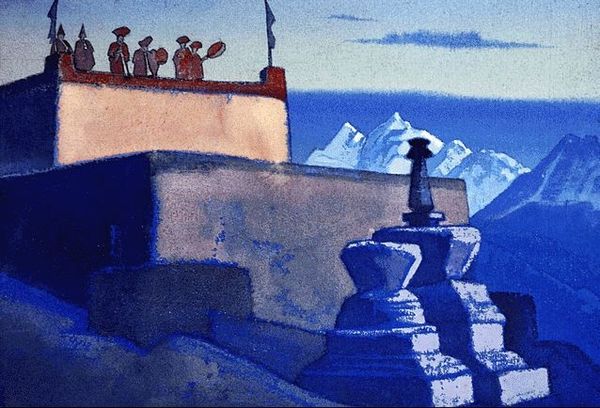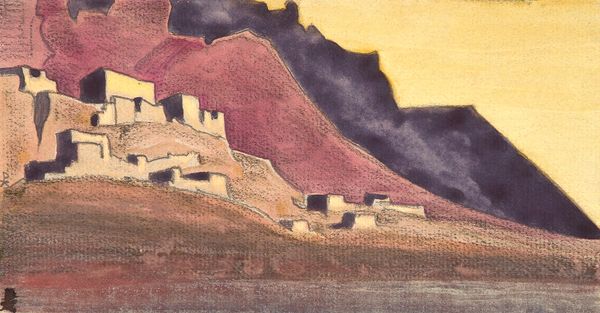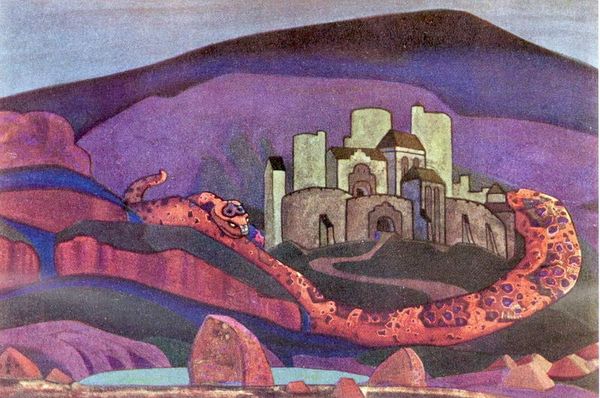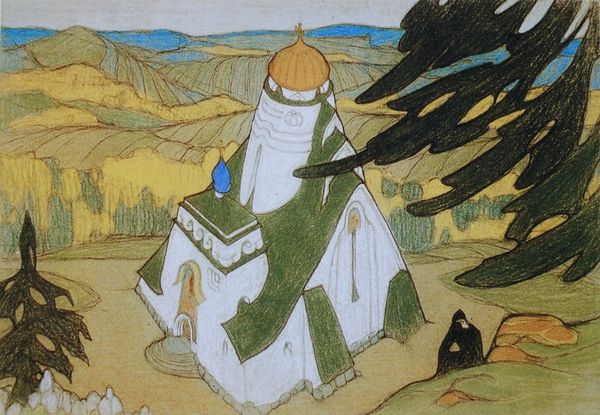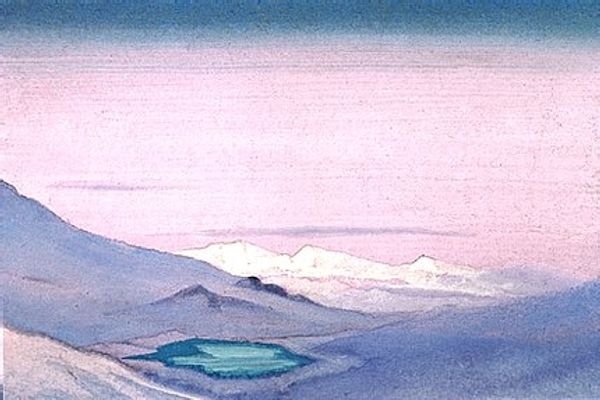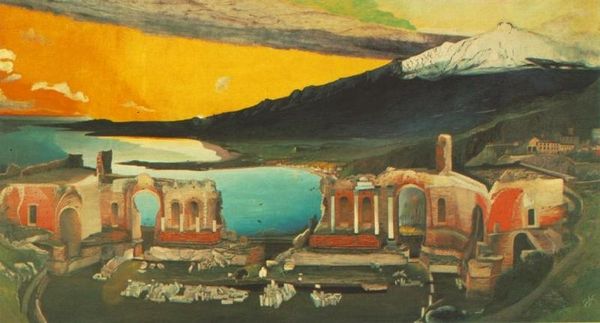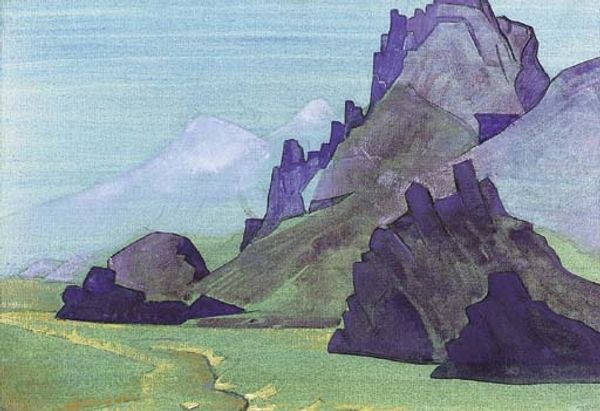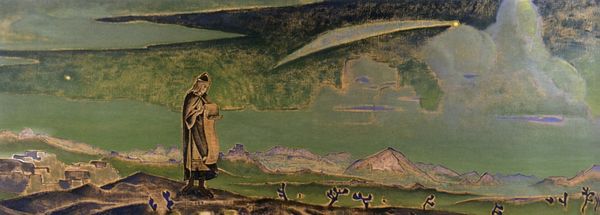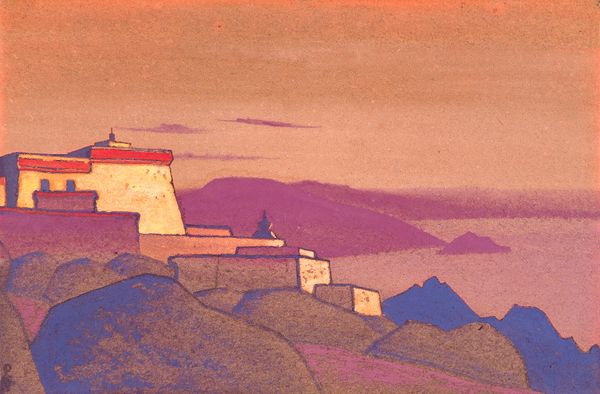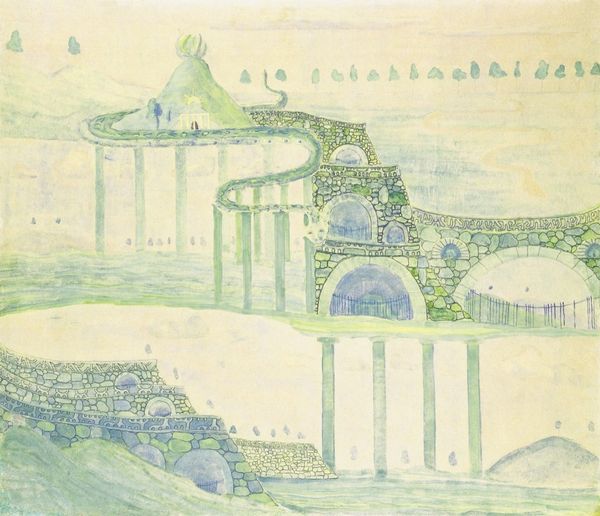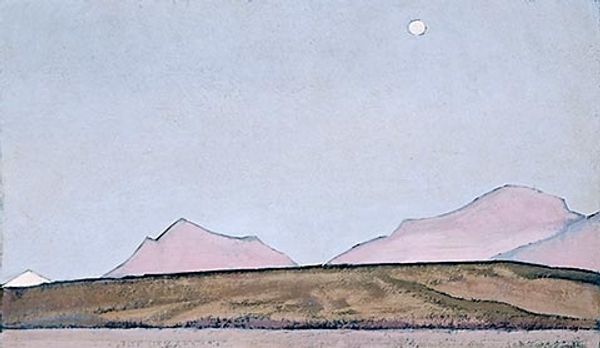
painting, watercolor
#
sky
#
painting
#
landscape
#
watercolor
#
geometric
#
mountain
#
cloud
#
watercolor
Copyright: Public domain
Curator: Standing before us is Nicholas Roerich’s "Study to Wanderer of the Light City," created in 1933, using watercolor to depict a mountainous landscape. Editor: It strikes me immediately with its almost dreamlike quality. The soft blues and the muted pinks of the architectural structure nestled into the land create this very ethereal feeling. It is simultaneously serene and otherworldly. Curator: Roerich's choice of watercolor as a medium lends itself to that ethereal feel you're describing. Watercolor allows for the kind of luminosity and blending that makes the sky feel so vast and almost tangible, doesn't it? And the texture of the paper is visible, which contrasts beautifully with the hard architectural structures. I think the handmade quality adds another dimension. Editor: Exactly, it does seem incredibly intentional—and, looking at the title, it hints towards utopian narratives prominent in that interwar period. What societal narratives, then, can we consider to better situate Roerich's landscape and use of color? The pastel tones juxtapose so strongly against the hard, clearly defined lines of the temple-like building, a manmade intrusion on the horizon that makes you question what that "light city" even represents. Curator: That contrast is intriguing. Roerich himself was deeply involved with the Theosophical Society, which was gaining traction and promoting syncretism and spiritualism at that time, aiming to create a new, enlightened world. So, I would ask, does the construction represent mankind's imposition or its reaching for the divine, or is it the raw, beautiful mountains offering divine refuge? Editor: That is a vital point! Roerich, and the Theosophical Society at large, held complex and contested views on race, hierarchy, and what enlightenment even means. I am certain that impacts not just our understanding of the landscape, but his labor, artistic choices, and materials at hand in 1933, against global economic depression. Curator: Right, understanding Roerich's personal philosophy certainly informs how we read these sharp delineations and also these soft, muted tones. Editor: It invites an exciting exploration of material conditions, societal reform, utopian desire, and potential domination... all wrapped up in a seemingly peaceful watercolor! Curator: Indeed, I see your point. The technique, combined with the context, reveals the deeper, perhaps conflicting, layers of this artwork. Editor: And that’s what keeps it fascinating to consider today.
Comments
No comments
Be the first to comment and join the conversation on the ultimate creative platform.
